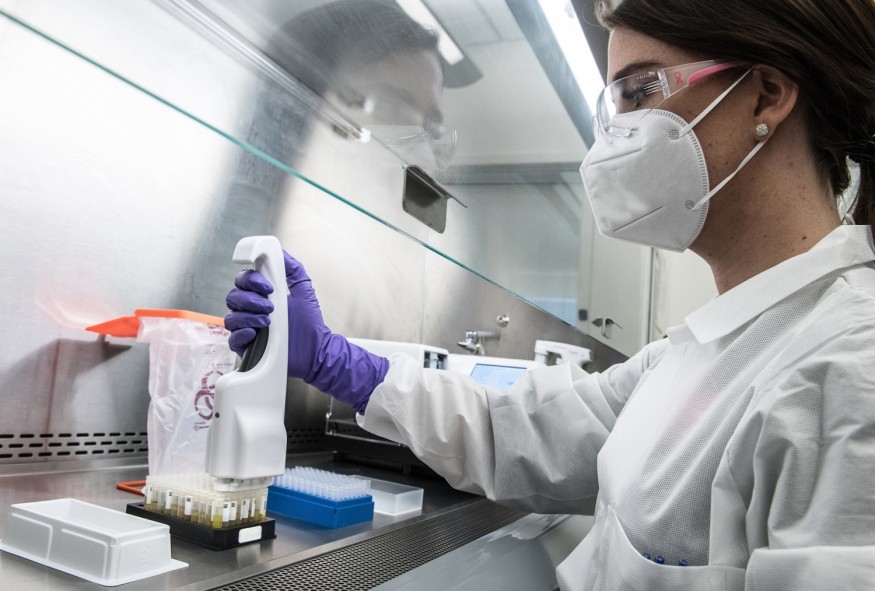Experts from the Shenzhen Institute of Advanced Technology (SIAT) of the Chinese Academy of Sciences (CAS) have developed a gene therapy strategy that allows selective manipulation of Parkinson's disease-affected circuitry. It also attenuates the core motor symptoms of this brain disorder in rodents and nonhuman primate animals.

Mechanisms of Parkinson's Disease
Parkinson's disease is one of the most common neurodegenerative diseases in the elderly population, which affects over 6 million people all around the world. The loss of midbrain dopaminergic neurons characterizes this medical condition.
In brain anatomy, 90% of neurons in the striatum are made of dopamine receptor D1-expressing and D2-expressing medium spiny neurons. Both D1-MSN and D2-MSN receive dopaminergic innervation coming from the substantia nigra pars compacta (SNc), but they play contradicting roles in movement control.
D1-MSNs projecting to the globus pallidus internal segment (GPi) and substantia nigra pars reticulata (SNr) form the direct pathway and promote movement. On the other hand, D2-MSNs projecting to the globus pallidus external segment (GPe) constitute the indirect pathway and mediate activity inhibition.
In Parkinson's disease, dopamine depletion leads to the hypoactivity of the direct pathway and the hyperactivity of the indirect pathway, resulting in different motor symptoms. Treatments based on levodopa (L-Dopa), which helps restore the function of the dopamine system, are the mainstay therapy for Parkinson's disease.
However, almost all patients who receive long-term L-Dopa treatment experience motor complications like dyskinesia and motor fluctuations, because of this, efficient and stable treatment options are greatly needed.
Breakthrough in Gene Therapy
SNr receives dense projections from the D1-MSNs and no projections from the D2-MSNs. From these conditions, the experts suggest selectively labeling D1-MSNs by injecting highly efficient retrograde adeno-associated virus (AAV) into the SNr and exclusively manipulating them by introducing elements that regulate neuronal activity in the retrograde AAV.
To make this possible, the research team developed a new AAV capsid called AAV8R12. This can be used for efficient retrograde labeling of the D1-MSN in the striatum and a new promoter G88P2/3/7 with strong D1-MSN activity. This gene therapy approach can specifically activate D1-MSN with a chemogenetic effector rM3Ds, to match the systemic administration of the activation drug. As a result, it can drive the D1-MSN-mediated direct pathway.
The result of the study reveals that typical motor symptoms like rigidity, bradykinesia, and tremor were improved in primate models after applying the circuit-specific approach. While L-Dopa treatment non-specifically activates the dopamine system in the brain and peripheral organs, the new therapy precisely manipulates the D1-MSN-mediated direct pathway.
Aside from its therapeutic effectiveness, circuit-manipulating gene therapy has a faster onset and longer duration than L-Dopa treatment. The reduction of symptoms following a single drug administration lasts longer than 24 hours, unlike the typical therapeutic window for L-Dopa, which lasts only 6 hours.
Moreover, motor complications like dyskinesia, which appear after L-Dopa treatment, were absent after applying the gene therapy over an extended period. The researchers are confident that this circuit-manipulating gene therapy can pave the way for future development of targeted, circuit-based therapeutic strategies for other brain disorders.
RELATED ARTICLE : Researchers Discover Key Player in Parkinson's Disease That May Lead to Drug Development Opportunities
Check out more news and information on Parkinson's Disease in Science Times.
© 2026 ScienceTimes.com All rights reserved. Do not reproduce without permission. The window to the world of Science Times.












